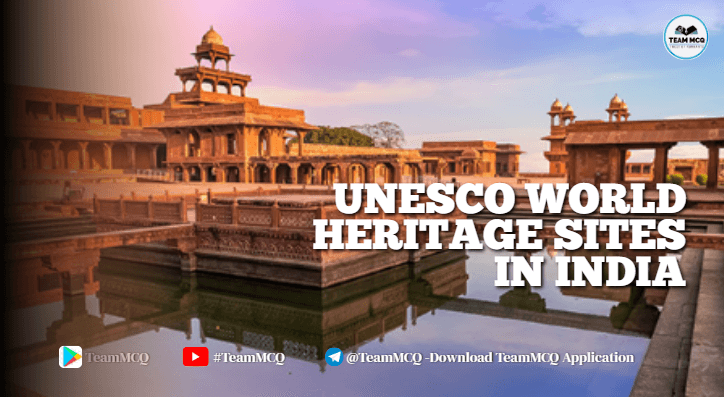Explore the top 15 UNESCO World Heritage Sites in India that showcase the country’s incredible cultural heritage, architectural brilliance, and natural beauty.
Introduction: A Timeless Legacy of Culture and Nature
India, a land steeped in ancient wisdom, architectural brilliance, and diverse ecosystems, is home to some of the most magnificent sites recognized globally for their cultural and natural significance. The UNESCO World Heritage Sites in India are not just tourist attractions—they are powerful symbols of the country’s vibrant past, artistic achievements, and ecological richness.
As of today, India proudly houses 42 UNESCO World Heritage Sites, ranking sixth globally. These include 34 cultural, 7 natural, and 1 mixed site, spanning from the snowy peaks of the Himalayas to the coastal temples of the south. Each site reflects a chapter in India’s 5,000-year-old story—from the majestic Taj Mahal, to the resilient ruins of Hampi, and the lush biodiversity of the Western Ghats.
Recognized by the United Nations Educational, Scientific and Cultural Organization (UNESCO), these sites are preserved not only for their outstanding value to humanity but also for the generations that follow. The UNESCO World Heritage Sites in India serve as windows into civilizations, dynasties, religions, and natural wonders that have shaped the subcontinent.
In this article, we’ll journey through 15 of the most iconic UNESCO World Heritage Sites in India, each chosen for its uniqueness and historical or ecological importance. Whether you’re a heritage enthusiast, a student, or a traveler, understanding these sites is key to appreciating the soul of India.

1. Ajanta Caves – Maharashtra
The Ajanta Caves, carved between the 2nd century BCE and the 6th century CE, are among the earliest examples of Buddhist rock-cut architecture in India. Located in Maharashtra, these 30 caves are renowned for their intricate sculptures and frescoes that depict the life of the Buddha and stories from the Jataka tales.
Declared a UNESCO World Heritage Site in 1983, the Ajanta Caves are a masterpiece of devotion, craftsmanship, and ancient engineering. The paintings, executed in tempera on dry plaster, remain some of the most outstanding examples of early Indian art. The site showcases how religious beliefs shaped Indian aesthetics and architecture over centuries, making it an essential stop for those studying UNESCO World Heritage Sites in India.

2. Taj Mahal – Uttar Pradesh
The Taj Mahal, a white marble mausoleum located in Agra, is perhaps the most recognized symbol of India’s cultural heritage. Commissioned by Mughal Emperor Shah Jahan in memory of his wife Mumtaz Mahal, it was completed in 1653 and stands as a timeless monument of love.
Inscribed as a UNESCO World Heritage Site in 1983, the Taj Mahal exemplifies Mughal architecture, combining elements from Islamic, Persian, and Indian design traditions. Its symmetrical layout, calligraphy, domes, and reflective pools are key highlights. The Taj Mahal is not just a symbol of romantic devotion but also an architectural marvel, making it a cornerstone in the study of UNESCO World Heritage Sites in India.
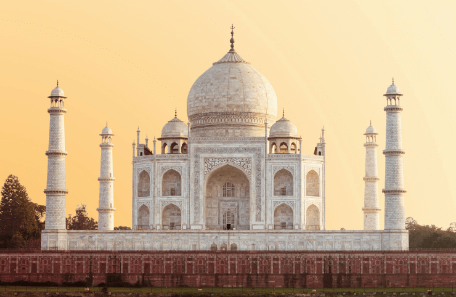
3. Qutub Minar – Delhi
The Qutub Minar, located in Delhi, is one of the most iconic monuments recognized among UNESCO World Heritage Sites in India. Constructed in the early 13th century by Qutb-ud-din Aibak and later completed by his successors, the tower stands at 72.5 meters and is the tallest brick minaret in the world.
Built using red sandstone and marble, the Qutub Minar reflects the artistic and architectural excellence of early Indo-Islamic architecture. The structure is adorned with intricate carvings and Quranic inscriptions, signifying a blend of spiritual and historical significance. The surrounding Qutub Complex, which includes the Iron Pillar and the Alai Darwaza, further enriches its heritage value. Listed as a UNESCO World Heritage Site in 1993, the Qutub Minar is an essential part of India’s medieval historical narrative and a prime example of Delhi’s layered urban heritage.
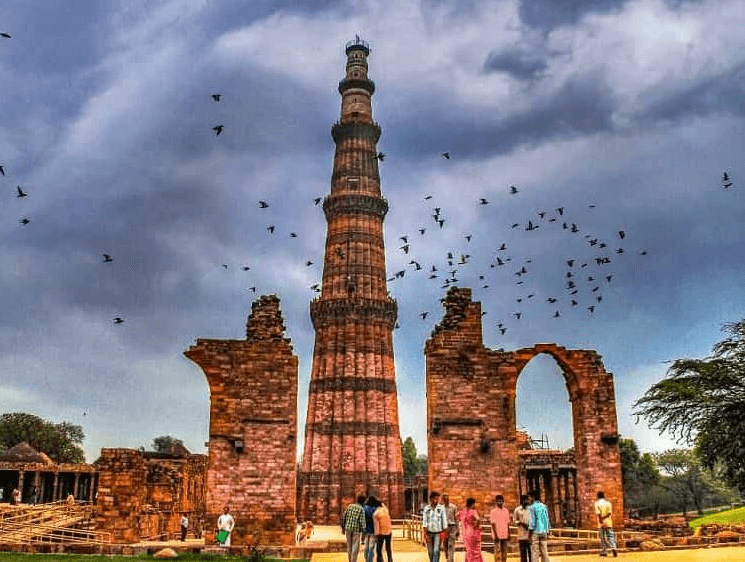
4. Red Fort – Delhi
The Red Fort, or Lal Qila, is a grand symbol of Mughal power and architectural finesse, located in the heart of Delhi. Commissioned by Emperor Shah Jahan in 1638 and completed in 1648, it served as the main residence of the Mughal emperors for nearly 200 years. Its massive red sandstone walls stretch over 2 kilometers, enclosing a complex of palaces, halls, gardens, and mosques.
Designated as a UNESCO World Heritage Site in India in 2007, the Red Fort stands as a witness to India’s colonial past and post-independence pride. Every year on Independence Day, the Prime Minister hoists the national flag from its ramparts, underlining its continued political and cultural relevance. The fort’s unique blend of Persian, Timurid, and Indian architecture exemplifies the sophistication of Mughal design and makes it a cornerstone of India’s world heritage legacy.
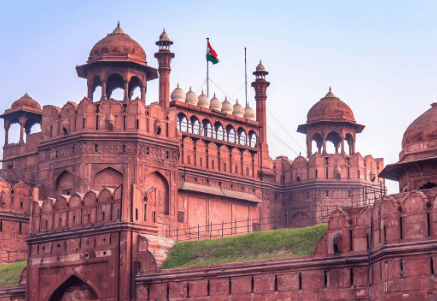
5. Sun Temple – Konark, Odisha
The Sun Temple at Konark is one of the most remarkable examples of ancient Indian temple architecture and is recognized as a significant cultural site among UNESCO World Heritage Sites in India. Constructed in the 13th century by King Narasimhadeva I of the Eastern Ganga Dynasty, the temple is designed in the shape of a colossal chariot dedicated to Surya, the Sun God.
Its intricate carvings, massive stone wheels, and lifelike sculptures illustrate the zenith of Kalinga architecture. The temple complex also reflects deep astronomical knowledge, as the temple was constructed to allow the first rays of the sun to strike the main sanctum. Though the sanctum no longer stands today, the structure’s artistic brilliance and spiritual symbolism continue to draw global admiration. Inscribed by UNESCO in 1984, the Konark Sun Temple stands as a timeless tribute to India’s architectural and cultural legacy.
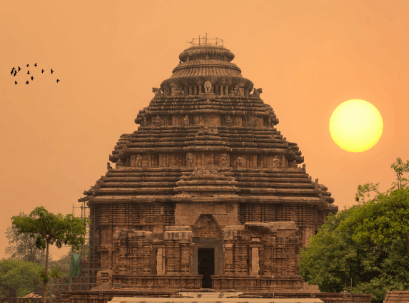
6. Khajuraho Group of Monuments – Madhya Pradesh
The Khajuraho Group of Monuments, located in Madhya Pradesh, is a celebrated representation of Indian temple architecture and sacred art. These temples were built between the 9th and 12th centuries by the Chandela dynasty and were inscribed as UNESCO World Heritage Sites in India in 1986 due to their exceptional cultural value.
Out of the original 85 temples, 25 remain today, showcasing a remarkable blend of Hindu and Jain religious traditions. The temples are globally renowned for their finely detailed sculptures depicting gods, goddesses, celestial beings, musicians, and scenes from everyday life—including the famous erotica that symbolizes the Tantric traditions of that period. These temples reflect not only aesthetic excellence but also philosophical depth, representing harmony between physical and spiritual realms. The Khajuraho monuments are a vital part of India’s cultural identity and artistic heritage.
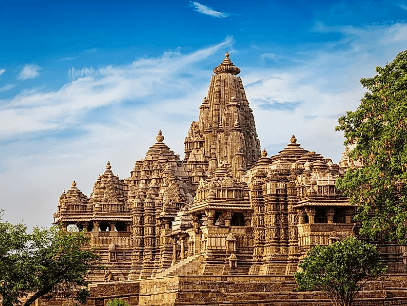
7. Group of Monuments at Mahabalipuram – Tamil Nadu
The Group of Monuments at Mahabalipuram, located along the Coromandel Coast of Tamil Nadu, is a celebrated ensemble of rock-cut temples and sculptures from the Pallava dynasty, dating back to the 7th and 8th centuries CE. Recognized among the UNESCO World Heritage Sites in India since 1984, the site showcases the architectural and artistic ingenuity of early Dravidian temple design.
The complex includes rathas (monolithic temples), mandapas (cave sanctuaries), giant open-air rock reliefs like “Descent of the Ganges,” and the famous Shore Temple overlooking the Bay of Bengal. These structures are not only aesthetically striking but also significant in illustrating the transition from rock-cut to structural temple architecture in South India. The monuments at Mahabalipuram represent a confluence of religion, art, and nature, making them a crucial part of India’s cultural and historical narrative.
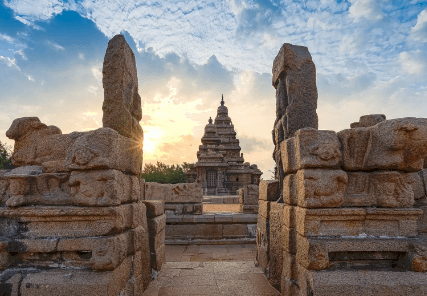
8. Hampi – Karnataka
Hampi, the capital city of the Vijayanagara Empire during the 14th to 16th centuries, is one of the most spectacular archaeological sites listed under UNESCO World Heritage Sites in India. Spread across the banks of the Tungabhadra River in Karnataka, the ruins of Hampi reflect the empire’s former grandeur, blending Hindu architectural styles with Islamic influences.
The site includes palaces, market streets, aquatic structures, temples like the Virupaksha and Vittala Temples, and the iconic stone chariot. The intricate carvings, towering gopurams, and use of local granite speak volumes about the sophistication of Vijayanagara-era construction. Hampi was inscribed as a UNESCO World Heritage Site in 1986 due to its outstanding universal value as a cultural and religious centre. Today, it stands as a powerful reminder of a flourishing South Indian empire and is a vital chapter in the study of UNESCO World Heritage Sites in India.
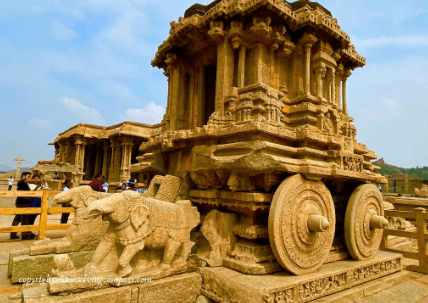
9. Fatehpur Sikri – Uttar Pradesh
Fatehpur Sikri, located near Agra in Uttar Pradesh, was established in the late 16th century by the Mughal Emperor Akbar as his imperial capital. Although the city was inhabited for only a short period, its architectural brilliance and historical significance have earned it a place among the UNESCO World Heritage Sites in India since 1986.
This red sandstone city exemplifies Mughal architecture, blending Persian, Indian, and Islamic styles. Notable structures include the Buland Darwaza, Jama Masjid, Panch Mahal, and the palace complex. The city was meticulously planned, with broad avenues, formal courtyards, and a striking use of symmetry. Despite its abandonment due to water scarcity, Fatehpur Sikri remains a symbol of Akbar’s architectural vision and secular philosophy. Its inclusion in the list of UNESCO World Heritage Sites in India highlights its importance as a cultural and political center of the Mughal era.

10. Churches and Convents of Goa
The Churches and Convents of Goa, inscribed in 1986, represent the influence of Portuguese colonial rule and Christian missionary work in India. Situated primarily in Old Goa, this group of religious buildings is one of the finest examples of Baroque and Manueline architectural styles outside Europe, firmly establishing it among the most remarkable UNESCO World Heritage Sites in India.
Key monuments include the Basilica of Bom Jesus (which houses the mortal remains of St. Francis Xavier), Sé Cathedral, Church of St. Francis of Assisi, and several convents and chapels. These structures reflect the rich cultural exchange between East and West, as well as the strategic and spiritual significance of Goa during the colonial period. The Churches and Convents of Goa remain active centers of worship and are central to the region’s heritage, offering insight into a pivotal era in Indian history.
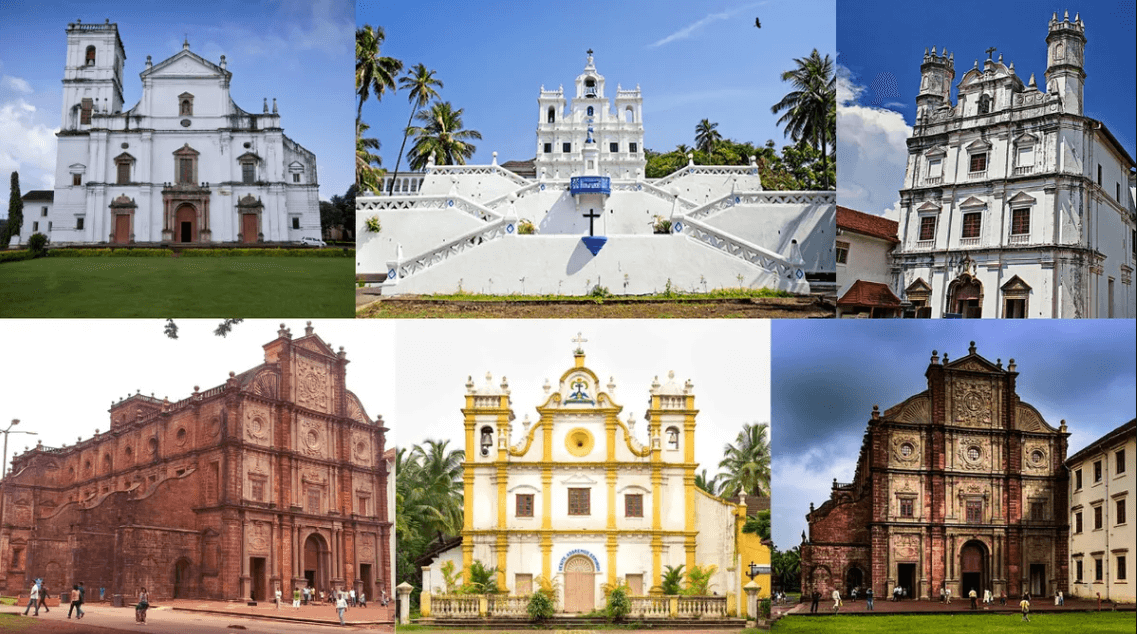
Summary Table: Cultural UNESCO World Heritage Site
| S.No | Site Name | Location | Key Highlights & Significance | Date of Inscription |
|---|---|---|---|---|
| 1 | Ajanta Caves | Maharashtra | Ancient Buddhist rock-cut caves with paintings and sculptures; depicts Buddhist religious art. | 1983 |
| 2 | Taj Mahal | Agra, Uttar Pradesh | Iconic white marble mausoleum built by Shah Jahan for his wife Mumtaz Mahal; symbol of love and Mughal architecture. | 1983 |
| 3 | Qutub Minar | Delhi | Tallest brick minaret in the world; significant example of Indo-Islamic Afghan architecture. | 1993 |
| 4 | Red Fort | Delhi | Mughal fortification with significant historical events like the Indian Rebellion of 1857. | 2007 |
| 5 | Sun Temple | Konark, Odisha | Temple shaped like a chariot; a UNESCO masterpiece of Kalinga architecture dedicated to the Sun God, Surya. | 1984 |
| 6 | Khajuraho Group of Monuments | Madhya Pradesh | Famous for intricately carved temples and sculptures; represents Indian architecture and culture. | 1986 |
| 7 | Group of Monuments at Mahabalipuram | Tamil Nadu | Rock-cut temples and monuments; reflects Dravidian architecture of the Pallava dynasty. | 1984 |
| 8 | Hampi | Karnataka | Capital of the Vijayanagara Empire; rich in architectural ruins and historical significance. | 1986 |
| 9 | Fatehpur Sikri | Uttar Pradesh | Mughal city built by Emperor Akbar; showcases Mughal and Persian architectural fusion. | 1986 |
| 10 | Churches and Convents of Goa | Goa | Exemplifies Portuguese colonial influence; baroque architecture and Christian heritage. | 1986 |
Natural UNESCO World Heritage Sites in India
India’s natural heritage is as rich and diverse as its cultural legacy. The UNESCO World Heritage Sites in India include a select group of protected natural areas that represent the country’s ecological wealth and conservation success stories. These sites are recognized globally for their outstanding natural beauty, unique biodiversity, and ecological significance.
From the floodplains of Kaziranga to the dense forests of the Western Ghats, these regions support a wide array of flora and fauna, some of which are endangered or endemic. Each site plays a crucial role in maintaining ecological balance and advancing scientific research and environmental education.
In this section, we explore the most significant natural UNESCO World Heritage Sites in India, highlighting their global importance and the need for continued protection and sustainable management.
1. Kaziranga National Park – Assam
Kaziranga National Park, located in the northeastern state of Assam, is one of the most renowned UNESCO World Heritage Sites in India. Inscribed in 1985, the park is internationally acclaimed for its population of the endangered one-horned rhinoceros. It also supports significant numbers of tigers, elephants, wild water buffalo, and swamp deer, making it a vital biodiversity hotspot.
The park’s unique ecosystem, formed by the floodplains of the Brahmaputra River, supports grasslands, wetlands, and dense forests. Its ecological diversity and conservation success have made Kaziranga a model for wildlife protection efforts in India.
From an academic and environmental perspective, Kaziranga National Park exemplifies the significance of conserving endangered species through habitat preservation. It is a living laboratory for conservation biology, making it a critical inclusion in the list of UNESCO World Heritage Sites in India.
📅 Year of Inscription: 1985
📍 Significance: Biodiversity hotspot, habitat of one-horned rhinoceros.

2. Keoladeo National Park – Rajasthan
Formerly known as Bharatpur Bird Sanctuary, Keoladeo National Park in Rajasthan is another important UNESCO World Heritage Site in India, inscribed in 1985. This man-made wetland serves as a wintering ground for thousands of migratory birds, including the rare Siberian crane.
Keoladeo’s intricate network of canals and dykes makes it a unique example of human-made habitat management for biodiversity conservation. Its importance in avian migration and wetland ecosystem research makes it academically significant for ecological studies.
Keoladeo is not just a sanctuary—it is a critical node in the Central Asian Flyway, providing resting and breeding grounds for over 370 bird species.
📅 Year of Inscription: 1985
📍 Significance: Migratory bird habitat, wetland conservation.

3. Manas Wildlife Sanctuary – Assam
Manas Wildlife Sanctuary, located at the foothills of the Eastern Himalayas in Assam, is one of the most ecologically rich and visually stunning UNESCO World Heritage Sites in India. Inscribed in 1985, it is both a Project Tiger Reserve and a Biosphere Reserve, recognized for its unique combination of forested hills, grasslands, and riverine ecosystems.
The sanctuary is home to many endangered and rare species including the Assam roofed turtle, pygmy hog, golden langur, and the Indian rhinoceros. It also shelters tigers, elephants, leopards, and wild buffalo. Its position in the Indo-Burma biodiversity hotspot adds to its global ecological importance.
Academically, Manas serves as an example of integrated conservation and biodiversity protection. Its listing among UNESCO World Heritage Sites in India underscores the value of preserving fragile ecosystems in politically and ecologically sensitive regions.
📅 Year of Inscription: 1985
📍 Significance: Project Tiger Reserve, high biodiversity, habitat for rare and endemic species.

4. Nanda Devi and Valley of Flowers National Parks – Uttarakhand
Nanda Devi and Valley of Flowers National Parks, located in the Indian state of Uttarakhand, are among the most iconic UNESCO World Heritage Sites in India. Inscribed in 1988 (with an extension in 2005), these parks are jointly recognized for their outstanding natural beauty, ecological diversity, and conservation significance.
Nanda Devi National Park, dominated by the towering Nanda Devi Peak (7,816 m), is a high-altitude wilderness of alpine meadows, glaciers, and deep gorges. It is home to rare Himalayan species such as the snow leopard, Himalayan musk deer, and bharal (blue sheep). Entry to the core zone is highly restricted, ensuring minimal human interference and maximum ecological preservation.
Valley of Flowers National Park, part of the same World Heritage Site, is famed for its seasonal bloom of hundreds of endemic alpine flowers. During monsoon months, the valley transforms into a vibrant canvas of colors, drawing botanists and trekkers from around the world.
Together, they represent one of the most pristine alpine ecosystems in the Himalayas and play a critical role in biodiversity conservation. Their inclusion among UNESCO World Heritage Sites in India underscores India’s commitment to preserving high-altitude wilderness.
📅 Year of Inscription: 1988 (Extended in 2005)
📍 Significance: High-altitude biodiversity, endemic flora and fauna, scenic alpine landscapes.

5. Sundarbans National Park – West Bengal
Sundarbans National Park, located in the delta region of West Bengal, is one of the most iconic UNESCO World Heritage Sites in India, inscribed in 1987. It is part of the largest mangrove forest in the world and is renowned as the natural habitat of the Royal Bengal Tiger.
This unique ecosystem, formed at the confluence of the Ganges, Brahmaputra, and Meghna rivers, supports a vast array of biodiversity. In addition to tigers, it is home to saltwater crocodiles, spotted deer, fishing cats, and various bird species. The mangrove vegetation, tidal waterways, and mudflats make it a living laboratory for ecological research and climate resilience.
From an academic standpoint, Sundarbans highlights the importance of coastal ecosystem preservation, climate adaptation, and species conservation. Its inclusion among the UNESCO World Heritage Sites in India reinforces its global environmental significance and the need for sustained conservation efforts.
📅 Year of Inscription: 1987
📍 Significance: Largest mangrove forest, habitat of the Royal Bengal Tiger, ecological and climate significance.

6. Great Himalayan National Park Conservation Area – Himachal Pradesh
The Great Himalayan National Park Conservation Area, located in Himachal Pradesh, was inscribed as one of the UNESCO World Heritage Sites in India in 2014. This protected area is part of the western Himalayas and is renowned for its outstanding natural beauty and rich biodiversity. It covers an area of over 900 square kilometers and includes alpine meadows, temperate forests, and glacial valleys.
The park is home to several rare and endangered species, including the snow leopard, Himalayan brown bear, and musk deer. Its isolation and rugged terrain have helped preserve a relatively untouched ecosystem. The Great Himalayan National Park plays a crucial role in the conservation of Himalayan flora and fauna, representing one of the most pristine and ecologically valuable landscapes in the country.
As one of the important UNESCO World Heritage Sites in India, it provides researchers and conservationists with critical insights into high-altitude ecosystems and the impacts of climate change. The park also holds cultural importance for local communities, with a rich heritage of traditional forest use and ecological knowledge.
📅 Year of Inscription: 2014
📍 Significance: High-altitude biodiversity, habitat for endangered Himalayan species, conservation research.

7. Khangchendzonga National Park – Sikkim
Khangchendzonga National Park, located in the northeastern state of Sikkim, is one of the most unique UNESCO World Heritage Sites in India. It was inscribed in 2016 under the mixed heritage category, recognizing both its natural and cultural significance. The park includes the majestic Mount Khangchendzonga, the third-highest peak in the world, along with glaciers, deep valleys, and ancient forests.
This site is notable for being the first mixed heritage site among the UNESCO World Heritage Sites in India, honoring both the ecological richness and the sacred cultural traditions of the indigenous communities. The park harbors a diverse range of endemic and endangered species, including red pandas, snow leopards, and Himalayan blue sheep.
Culturally, the park is deeply intertwined with Sikkimese and Buddhist spiritual traditions. Sacred sites, including monasteries and hidden caves, are scattered throughout the park, making it a living example of the harmony between people and nature.
As one of the most ecologically and culturally significant UNESCO World Heritage Sites in India, Khangchendzonga National Park exemplifies the importance of preserving both biodiversity and indigenous heritage.
📅 Year of Inscription: 2016
📍 Significance: Mixed heritage site; rich biodiversity; sacred landscapes rooted in indigenous and Buddhist traditions.

Summary Table: Natural UNESCO World Heritage Site
| Sl. No. | Site Name | Location | Year of Inscription |
|---|---|---|---|
| 1 | Kaziranga National Park | Assam | 1985 |
| 2 | Manas Wildlife Sanctuary | Assam | 1985 |
| 3 | Keoladeo National Park | Rajasthan | 1985 |
| 4 | Nanda Devi and Valley of Flowers National Parks | Uttarakhand | 1988, extended in 2005 |
| 5 | Sundarbans National Park | West Bengal | 1987 |
| 6 | Great Himalayan National Park Conservation Area | Himachal Pradesh | 2014 |
| 7 | Khangchendzonga National Park | Sikkim | 2016 |
Note: This is a selection of Natural UNESCO World Heritage Sites in India. There are additional sites that are equally significant but are not included in this table for brevity.
Importance of These Sites
UNESCO World Heritage Sites in India play a vital role in preserving the nation’s cultural, historical, and natural legacy. These sites attract millions of domestic and international tourists every year, making them significant for both the economy and cultural exchange. From the Taj Mahal to the Sundarbans, each heritage site offers a unique experience that promotes awareness, education, and appreciation of India’s diverse heritage.
These heritage sites are also key to environmental and cultural conservation. Many natural UNESCO World Heritage Sites in India, such as Kaziranga and the Western Ghats, protect endangered species and sensitive ecosystems. Cultural sites like Hampi and Khajuraho preserve centuries-old architecture, inscriptions, and art forms.
Organizations like the Archaeological Survey of India (ASI) and UNESCO work collaboratively to ensure that these sites are properly maintained and restored. Through funding, training, and international recognition, they provide the resources and visibility necessary for sustainable site management.
In educational contexts, UNESCO World Heritage Sites in India serve as open classrooms. They offer insights into India’s ancient civilizations, regional histories, biodiversity, and evolving socio-political narratives. They also inspire civic pride and a sense of shared identity across diverse communities.
Conclusion: Preserving the Legacy
UNESCO World Heritage Sites in India are not just monuments or protected landscapes—they are living testaments to the country’s cultural richness and environmental importance. Preserving these sites is essential for maintaining continuity with the past, while providing inspiration and learning for the future.
As India moves forward, it becomes increasingly important to protect these sites from threats such as urbanization, climate change, pollution, and unsustainable tourism. Conservation is not just the responsibility of government bodies like the ASI or UNESCO; it requires active participation from local communities, scholars, and visitors alike.
By valuing and safeguarding UNESCO World Heritage Sites in India, we ensure that future generations can explore and learn from the diverse legacy these sites represent. They are India’s gifts to the world—and the world’s shared responsibility.
MCQ QUESTION WITH EXPLANATIONS
1. Which of the following is the first site in India to be inscribed as a UNESCO World Heritage Site?
A) Sun Temple, Konark
B) Kaziranga National Park
C) Ajanta Caves ✅
D) Red Fort
📝 Explanation: Ajanta Caves were among the first UNESCO World Heritage Sites in India, inscribed in 1983 for their remarkable Buddhist rock-cut architecture and murals.
2. The Kaziranga National Park is famous for which animal species?
A) Bengal Tiger
B) Asiatic Lion
C) Indian Elephant
D) One-horned Rhinoceros ✅
📝 Explanation: Located in Assam, Kaziranga is a natural UNESCO World Heritage Site in India, renowned for its successful conservation of the one-horned rhinoceros.
3. Which monument is known for its Indo-Islamic architecture and is a UNESCO World Heritage Site?
A) Victoria Memorial
B) India Gate
C) Qutub Minar ✅
D) Gateway of India
📝 Explanation: Qutub Minar in Delhi is a classic example of Indo-Islamic architecture and is part of UNESCO World Heritage Sites in India.
4. The Western Ghats are significant for being a:
A) Desert Ecosystem
B) Volcanic Range
C) Biodiversity Hotspot ✅
D) Man-made Water System
📝 Explanation: The Western Ghats, a serial natural site in UNESCO World Heritage Sites in India, are one of the world’s top eight “hottest hotspots” of biodiversity.
5. Hampi was the capital of which historical empire?
A) Mughal Empire
B) Chola Dynasty
C) Vijayanagara Empire ✅
D) Maurya Empire
📝 Explanation: Hampi, in Karnataka, is a UNESCO World Heritage Site in India that reflects the grandeur of the Vijayanagara Empire.
6. In which state is the Sundarbans National Park located?
A) Odisha
B) West Bengal ✅
C) Assam
D) Andhra Pradesh
📝 Explanation: The Sundarbans in West Bengal form one of the largest mangrove forests and are part of the natural UNESCO World Heritage Sites in India.
7. The Taj Mahal is considered a UNESCO World Heritage Site because of its:
A) Military Strength
B) Engineering Innovation
C) Architectural Beauty and Cultural Significance ✅
D) Political History
📝 Explanation: The Taj Mahal in Agra is one of the most iconic cultural UNESCO World Heritage Sites in India, admired for its Mughal architecture and symbolism.
8. Nanda Devi and Valley of Flowers National Parks are recognized for their:
A) Archaeological Findings
B) Religious Significance
C) Natural Beauty and Biodiversity ✅
D) Mining Resources
📝 Explanation: These twin sites in Uttarakhand are among the natural UNESCO World Heritage Sites in India, valued for their unique alpine flora and mountain ecosystem.
9. The Churches and Convents of Goa reflect the influence of which colonial power?
A) Dutch
B) Portuguese ✅
C) British
D) French
📝 Explanation: This cultural UNESCO World Heritage Site in India represents Portuguese architectural and religious influence during their rule in Goa.
10. Which of the following is a UNESCO World Heritage Site known for erotic temple sculptures?
A) Sanchi Stupa
B) Brihadeeswarar Temple
C) Khajuraho Group of Monuments ✅
D) Golden Temple
📝 Explanation: The Khajuraho temples in Madhya Pradesh are famous for their intricate carvings and are among the notable cultural UNESCO World Heritage Sites in India.

